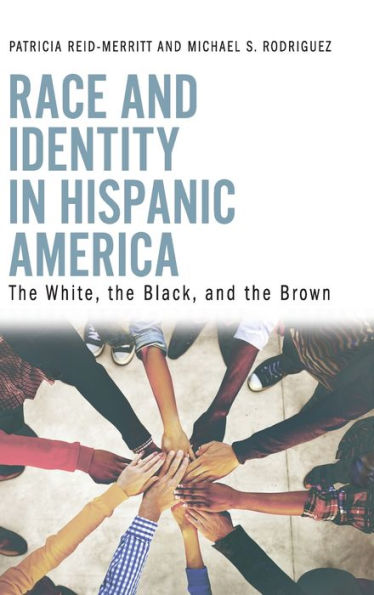Race and Identity in Hispanic America: The White, the Black, and the Brown
This book offers a historical and comparative overview of the evolution of racial classifications in the United States, Latin America, and the Caribbean.
The Hispanicization of America is precipitating a paradigm shift in racial thinking in which race is no longer defined by distinct characteristics but rather is becoming synonymous with ethnic/cultural identity.
Traditionally, assimilation has been conceived of as a unidirectional and racialized phenomenon. Newly arrived immigrant groups or longstanding minority/indigenous populations were "Americanized" in confining their racial and ethnic natures to the private sphere and adopting, in the public sphere, the cultural mores, norms, and values of the dominant cultural/racial group. In contrast, the Hispanicization of America entails the horizontal assimilation of various groups from Spanish-speaking countries throughout the Western Hemisphere and Caribbean into a pan-ethnic, Hispanic/Latino identity that also challenges the privileged position of whiteness as the primary and exclusive referent for American identity.
Instead of focusing on one Hispanic group, ethnic identity, or region, this book chronicles the development of racial identity across the largest Hispanic groups throughout the United States.
1130199957
The Hispanicization of America is precipitating a paradigm shift in racial thinking in which race is no longer defined by distinct characteristics but rather is becoming synonymous with ethnic/cultural identity.
Traditionally, assimilation has been conceived of as a unidirectional and racialized phenomenon. Newly arrived immigrant groups or longstanding minority/indigenous populations were "Americanized" in confining their racial and ethnic natures to the private sphere and adopting, in the public sphere, the cultural mores, norms, and values of the dominant cultural/racial group. In contrast, the Hispanicization of America entails the horizontal assimilation of various groups from Spanish-speaking countries throughout the Western Hemisphere and Caribbean into a pan-ethnic, Hispanic/Latino identity that also challenges the privileged position of whiteness as the primary and exclusive referent for American identity.
Instead of focusing on one Hispanic group, ethnic identity, or region, this book chronicles the development of racial identity across the largest Hispanic groups throughout the United States.
Race and Identity in Hispanic America: The White, the Black, and the Brown
This book offers a historical and comparative overview of the evolution of racial classifications in the United States, Latin America, and the Caribbean.
The Hispanicization of America is precipitating a paradigm shift in racial thinking in which race is no longer defined by distinct characteristics but rather is becoming synonymous with ethnic/cultural identity.
Traditionally, assimilation has been conceived of as a unidirectional and racialized phenomenon. Newly arrived immigrant groups or longstanding minority/indigenous populations were "Americanized" in confining their racial and ethnic natures to the private sphere and adopting, in the public sphere, the cultural mores, norms, and values of the dominant cultural/racial group. In contrast, the Hispanicization of America entails the horizontal assimilation of various groups from Spanish-speaking countries throughout the Western Hemisphere and Caribbean into a pan-ethnic, Hispanic/Latino identity that also challenges the privileged position of whiteness as the primary and exclusive referent for American identity.
Instead of focusing on one Hispanic group, ethnic identity, or region, this book chronicles the development of racial identity across the largest Hispanic groups throughout the United States.
The Hispanicization of America is precipitating a paradigm shift in racial thinking in which race is no longer defined by distinct characteristics but rather is becoming synonymous with ethnic/cultural identity.
Traditionally, assimilation has been conceived of as a unidirectional and racialized phenomenon. Newly arrived immigrant groups or longstanding minority/indigenous populations were "Americanized" in confining their racial and ethnic natures to the private sphere and adopting, in the public sphere, the cultural mores, norms, and values of the dominant cultural/racial group. In contrast, the Hispanicization of America entails the horizontal assimilation of various groups from Spanish-speaking countries throughout the Western Hemisphere and Caribbean into a pan-ethnic, Hispanic/Latino identity that also challenges the privileged position of whiteness as the primary and exclusive referent for American identity.
Instead of focusing on one Hispanic group, ethnic identity, or region, this book chronicles the development of racial identity across the largest Hispanic groups throughout the United States.
55.0
In Stock
5
1

Race and Identity in Hispanic America: The White, the Black, and the Brown
232
Race and Identity in Hispanic America: The White, the Black, and the Brown
232
55.0
In Stock

Product Details
| ISBN-13: | 9781440867842 |
|---|---|
| Publisher: | Bloomsbury Academic |
| Publication date: | 04/03/2020 |
| Pages: | 232 |
| Product dimensions: | 6.40(w) x 9.50(h) x 0.75(d) |
About the Author
From the B&N Reads Blog
